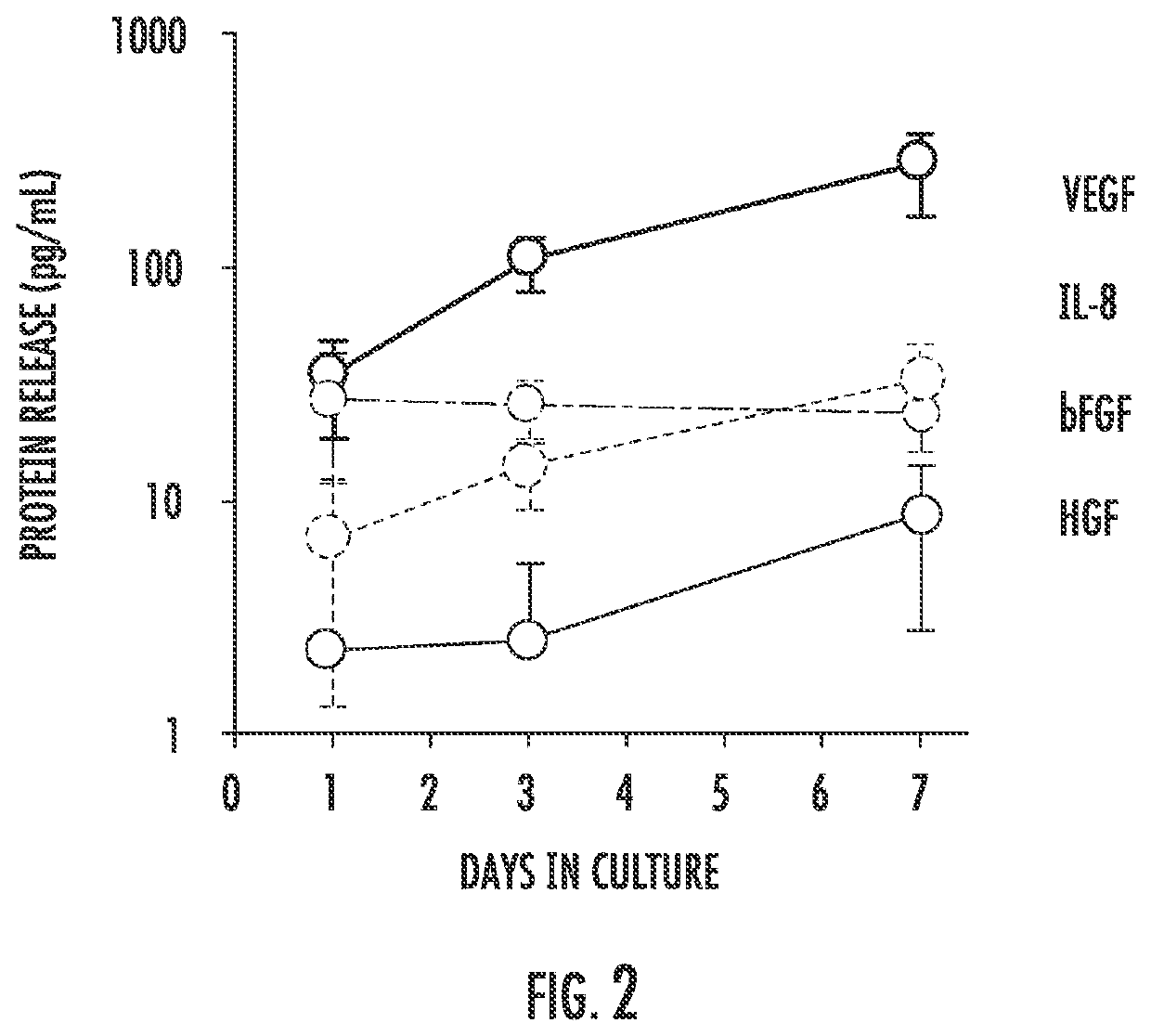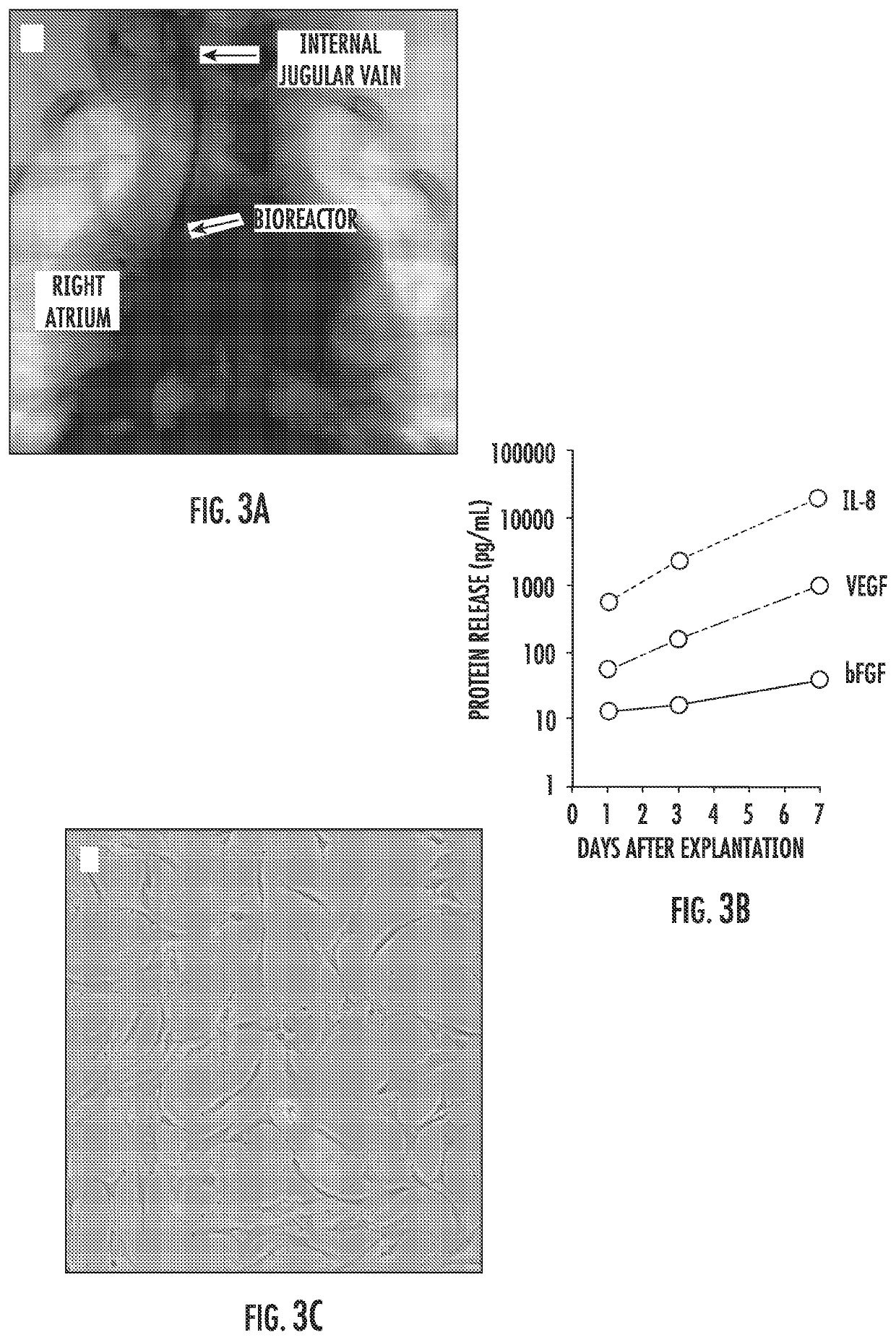Implantable bioreactor and methods for making and using same
a bioreactor and implantable technology, applied in the field of implantable bioreactors and methods for making and using same, can solve the problems of limiting adverse remodeling after a tissue, limiting the effect of stem cell therapy on adverse remodeling in many clinical trials, so as to improve retention, and improve the effect of stem cell survival
- Summary
- Abstract
- Description
- Claims
- Application Information
AI Technical Summary
Benefits of technology
Problems solved by technology
Method used
Image
Examples
example 1
[0149]In Vitro and In Vivo Testing of First Generation (GI) Stem Cell Implantable Bioreactor (SCIB).
[0150]We fabricated and tested prototypes of a first generation SCIB (G1-SCIB) with a cylindrical stem cell chamber (FIG. 1) attached to a vascular catheter shaft. The G1 prototype was constructed from a semi-permeable cellulose ester membrane with a 100-kilodalton molecular weight cut-off, and as such, is impermeable to the exosomal fraction of paracrine factors (PFs). A 10-cm membrane segment was attached to a 20-cm modified 6 French vascular catheter (Boston Scientific, Marlborough, Mass.) with a heat-sealed distal end and the shaft fenestrated at 1-cm intervals using an 18-Gauge needle. The membrane was secured to the mid-portion of the modified catheter using cyanoacrylate medical device adhesive (Henkel, Rocky Hill, Conn.), 2-0 silk surgical suture, and 0.125″ medical grade heat shrink tubing (InsulTab, Woburn, Mass.). The SCIBs were sterilized in 70% ethanol under ultra violet ...
example 2
[0156]In Vitro and In Vivo Testing of Second Generation (G2) Stem Cell Implantable Bioreactor (SCIB) with Enhanced Paracrine Factor Permeability and Inner Hydrogel Matrix.
[0157]Prototypes of a second-generation SCIB (G2-SCIB) were constructed with a stem cell pouch based on a 25-μm thick polyethylene terephthalate (PET) film and incorporating a highly porous hyaluronan hydrogel to encapsulate mesenchymal stem cells within the pouch (FIGS. 7A-7B). Pores in the PET film were created using track-etching, a technique that allows the creation of a dense field of highly uniform circular pores (FIGS. 6, 8). The PET film is first irradiated by mono-energetic heavy ions accelerated by a cyclotron under high vacuum to create linear damage tracks through the film. The damage tracks in the irradiated film are then processed in successive alkaline hydrolysis baths before acid neutralization and washings with demineralized water, etching uniform cylindrical pores with pore size and density that c...
PUM
| Property | Measurement | Unit |
|---|---|---|
| diameters | aaaaa | aaaaa |
| length | aaaaa | aaaaa |
| diameter | aaaaa | aaaaa |
Abstract
Description
Claims
Application Information
 Login to View More
Login to View More - R&D
- Intellectual Property
- Life Sciences
- Materials
- Tech Scout
- Unparalleled Data Quality
- Higher Quality Content
- 60% Fewer Hallucinations
Browse by: Latest US Patents, China's latest patents, Technical Efficacy Thesaurus, Application Domain, Technology Topic, Popular Technical Reports.
© 2025 PatSnap. All rights reserved.Legal|Privacy policy|Modern Slavery Act Transparency Statement|Sitemap|About US| Contact US: help@patsnap.com



